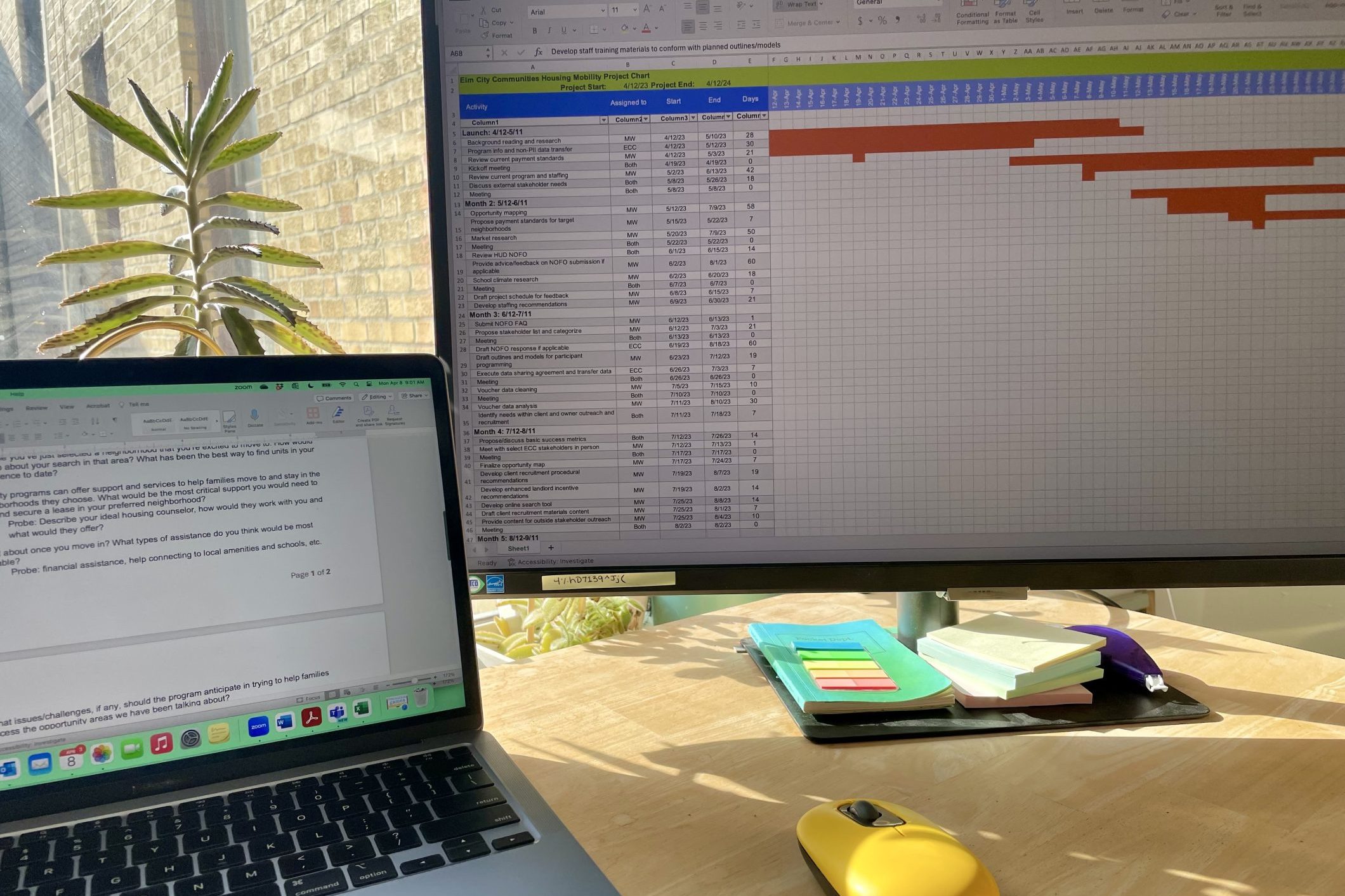
SAFMRs to Make Opportunity Accessible
In line with the Affirmatively Furthering Fair Housing (AFFH) obligations of public housing agencies, housing mobility programs work to redress historical and ongoing housing inequities, particularly with regard to race and class. Thanks to decades of effort by advocates, attorneys, fair housing practitioners, public housing agencies (PHAs), and HUD-assisted tenants, more communities around the country are implementing them.
HUD’s Community Choice Demonstration and the new Mobility Services grant program awarded in November 2023 are also bringing attention and resources to housing mobility and spurring mobility program development and potential improvement, but even with these advances in the field, not enough communities are working actively to expand opportunity for American families. Many Housing Choice Voucher (HCV) households remain consigned to high-poverty neighborhoods. One lever that is available to PHAs to fulfill their AFFH obligations and achieve better program outcomes is the strategic setting of payment standards.
PHAs’ payment standards determine the maximum value of the housing vouchers they administer. Typically, payment standards must be set within 90% and 110%[i] of HUD’s Fair Market Rents (FMRs), which are calculated annually from the 40th percentile of standard quality rental units in a metropolitan area or nonmetropolitan county. Use of a uniform regional market rent to determine the payment standard is limiting in any neighborhood where rents generally exceed the FMR, and effectively excludes voucher holders from living in those areas. It is also problematic because it may allow payment of rents in high-poverty and/or low-opportunity neighborhoods that exceed the actual cost to live there.
In 2016, to overcome this barrier and the perverse incentive created for HCV participants, HUD published the Small Area Fair Market Rents (SAFMR) Final Rule to allow the use of voucher payment standards based on rental costs within ZIP codes, rather than on the overall market for a metropolitan area.
SAFMRs are key to enabling housing mobility and increasing participant choice. They allow for payment standards that can help voucher holders access units in high-opportunity neighborhoods and discourage voucher holders from moving to the lower rent, low-opportunity neighborhoods where families in the HCV program often end up. Currently, there are 65 metropolitan areas in which HUD has mandated adoption of SAFMRs (totaling 192 PHAs): 24 metros were announced in 2016, and an additional 41 in 2023 with required implementation of SAFMRs by January 1, 2025. For a full list of required metropolitan areas, see here.
The SAFMR rule allows PHAs outside of these mandatory SAFMR metros to adopt SAFMRs voluntarily. Mobility Works commends these 15 additional PHAs that have voluntarily adopted SAFMRs:
The SAFMR Final Rule also allows PHAs not required to implement SAFMRs to establish exception payment standards up to 110%[ii] of the relevant SAFMR in higher cost ZIP codes. This option has been popular among PHAs because, while it does not allow for the cost balancing intended with the SAFMR system, it is simple to initiate (merely requiring an email to HUD at SAFMRs@hud.gov), and it enables leasing in areas that would otherwise be inaccessible to voucher holders.
As of January 2024, 73 PHAs have begun using SAFMR-based exception payment standards. The uptake of this policy is encouraging and is gaining momentum. Any PHA that encompasses high-poverty or highly segregated neighborhoods but is not mandated to use SAFMRs should either adopt them voluntarily or create exception payment standards for ZIPs in high-opportunity neighborhoods.
A strong housing mobility program is the most impactful intervention a PHA can adopt to affirmatively further fair housing for voucher participants. To realize their potential, PHAs offering housing mobility programs should adopt SAFMRs or set exception payment standards based on SAFMRs. Even without robust mobility services, however, use of these tools to implement sufficient payment standards in high-opportunity areas has been shown to increase access to lower-poverty, higher-opportunity neighborhoods for participants in the HCV program.
References
[i] Some PHAs have been approved to extend their payment standard basic range to 120% of FMR with a regulatory waiver of 24 CFR 982.503(b)(1)(i), but this added flexibility will expire on the date provided by HUD on each individual PHA approval response. In HUD Notice PIH 2023-29, HUD has provided guidance on a new waiver that allows exception payment standards up to 120% of FMR.
[ii] Some PHAs have been approved for exception payment standards up to 120% of the SAFMR for particular ZIP code areas with a regulatory waiver of 24 CFR 982.503(b)(1)(iii), but this added flexibility will expire on the date provided by HUD on each individual PHA approval response. In HUD Notice PIH 2023-29, HUD has provided guidance on new waivers that allow exception payment standards up to 120% of SAFMR for PHAs that are mandatory or opt-in SAFMR adopters as well as PHAs that currently have approval for SAFMR-based exception payment standards.
How can we assist you?



